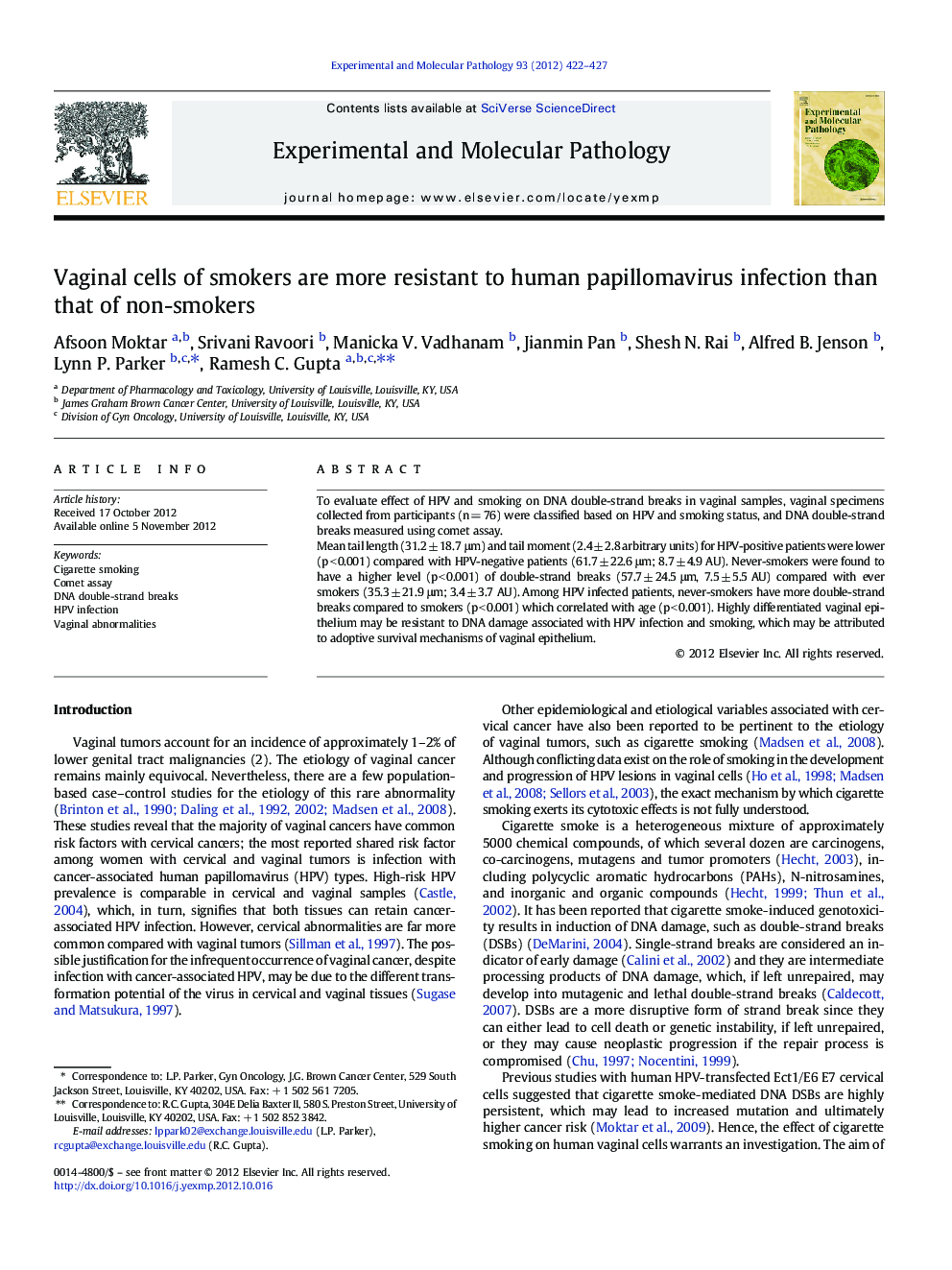| Article ID | Journal | Published Year | Pages | File Type |
|---|---|---|---|---|
| 2775187 | Experimental and Molecular Pathology | 2012 | 6 Pages |
To evaluate effect of HPV and smoking on DNA double-strand breaks in vaginal samples, vaginal specimens collected from participants (n = 76) were classified based on HPV and smoking status, and DNA double-strand breaks measured using comet assay.Mean tail length (31.2 ± 18.7 μm) and tail moment (2.4 ± 2.8 arbitrary units) for HPV-positive patients were lower (p < 0.001) compared with HPV-negative patients (61.7 ± 22.6 μm; 8.7 ± 4.9 AU). Never-smokers were found to have a higher level (p < 0.001) of double-strand breaks (57.7 ± 24.5 μm, 7.5 ± 5.5 AU) compared with ever smokers (35.3 ± 21.9 μm; 3.4 ± 3.7 AU). Among HPV infected patients, never-smokers have more double-strand breaks compared to smokers (p < 0.001) which correlated with age (p < 0.001). Highly differentiated vaginal epithelium may be resistant to DNA damage associated with HPV infection and smoking, which may be attributed to adoptive survival mechanisms of vaginal epithelium.
► Both cigarette smoking and HPV infection have a significant inverse correlation. ► Age has significant positive correlation with DNA double-strand breaks. ► Older women are at higher risk for accumulation of mutation and genetic instability. ► The relevance of these findings to public health is significant.
